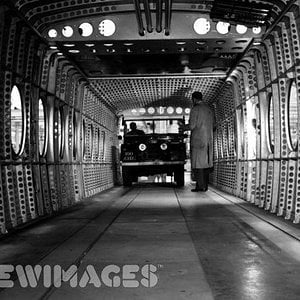Navigation
Install the app
How to install the app on iOS
Follow along with the video below to see how to install our site as a web app on your home screen.
Note: This feature may not be available in some browsers.
More options
You are using an out of date browser. It may not display this or other websites correctly.
You should upgrade or use an alternative browser.
You should upgrade or use an alternative browser.
Design and developmentThe Douglas X-3 Stiletto was the sleekest of the early experimental aircraft, but its research accomplishments were not those originally planned. It was originally intended for advanced Mach 2 turbojet propulsion testing, but it fell largely into the category of configuration explorers, as its performance (due to inadequate engines) never met its original performance goals.[3] The goal of the aircraft was ambitious — it was to take off from the ground under its own power, climb to high altitude, maintain a sustained cruise speed of Mach 2, then land under its own power. The aircraft was also to test the feasibility of low-aspect ratio wings, and the large-scale use of titanium in aircraft structures.
Construction of a pair of X-3s was approved on 30 June 1949. During development, the X-3's planned Westinghouse J46 engines were unable to meet the thrust, size and weight requirements, so lower-thrust Westinghouse J34 turbojets were substituted, producing only 4,900 lbf (21.8 kN) of thrust with afterburner rather than the planned 7,000 lbf (31.3 kN). The first aircraft was completed and delivered to Edwards Air Force Base, California, on 11 September 1952.
The X-3 featured an unusual, rakish shape of a long cylindrical fuselage with tiny trapezoidal wings. One of the design considerations was to create the smallest and "thinnest" shape possible in order to achieve a streamlined planform. The extended nose was to allow for the provision of test equipment while the semi-buried cockpit and windscreen was designed to alleviate the effects of "thermal thicket" conditions. The low aspect ratio, unswept wings were designed for high speed and later the Lockheed design team used data from the X-3 tests for the similar F-104 Starfighter wing design. Due to both engine and airframe problems, the partially completed second aircraft was cancelled, and its components were used for spare parts.[4]
Specifications (X-3)General characteristics
Crew: 1
Length: 66 ft 9 in (20.3 m)
Wingspan: 22 ft 8 in (6.9 m)
Height: 12 ft 6 in (3.8 m)
Wing area: 166.5 ft² (15.47 m²)
Empty weight: 16,120 lb (7,310 kg)
Max takeoff weight: 23,840 lb (10,810 kg)
Powerplant: 2 × Westinghouse J34 afterburning turbojet, 3,370 lbf, 4,850 lbf with afterburning (15.0 kN, 21.6 kN with afterburning) each
Performance
Maximum speed: 700 mph (1,125 km/h)
Range: 497 mi (800 km)
Service ceiling: 38,000 ft (11,600 m)
Thrust/weight: 0.40
Construction of a pair of X-3s was approved on 30 June 1949. During development, the X-3's planned Westinghouse J46 engines were unable to meet the thrust, size and weight requirements, so lower-thrust Westinghouse J34 turbojets were substituted, producing only 4,900 lbf (21.8 kN) of thrust with afterburner rather than the planned 7,000 lbf (31.3 kN). The first aircraft was completed and delivered to Edwards Air Force Base, California, on 11 September 1952.
The X-3 featured an unusual, rakish shape of a long cylindrical fuselage with tiny trapezoidal wings. One of the design considerations was to create the smallest and "thinnest" shape possible in order to achieve a streamlined planform. The extended nose was to allow for the provision of test equipment while the semi-buried cockpit and windscreen was designed to alleviate the effects of "thermal thicket" conditions. The low aspect ratio, unswept wings were designed for high speed and later the Lockheed design team used data from the X-3 tests for the similar F-104 Starfighter wing design. Due to both engine and airframe problems, the partially completed second aircraft was cancelled, and its components were used for spare parts.[4]
Specifications (X-3)General characteristics
Crew: 1
Length: 66 ft 9 in (20.3 m)
Wingspan: 22 ft 8 in (6.9 m)
Height: 12 ft 6 in (3.8 m)
Wing area: 166.5 ft² (15.47 m²)
Empty weight: 16,120 lb (7,310 kg)
Max takeoff weight: 23,840 lb (10,810 kg)
Powerplant: 2 × Westinghouse J34 afterburning turbojet, 3,370 lbf, 4,850 lbf with afterburning (15.0 kN, 21.6 kN with afterburning) each
Performance
Maximum speed: 700 mph (1,125 km/h)
Range: 497 mi (800 km)
Service ceiling: 38,000 ft (11,600 m)
Thrust/weight: 0.40








